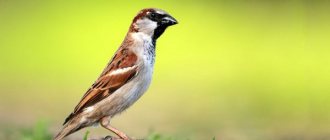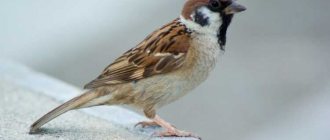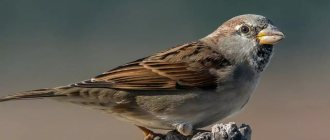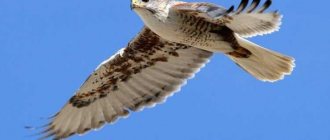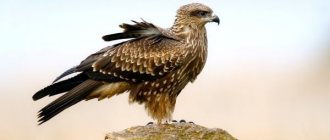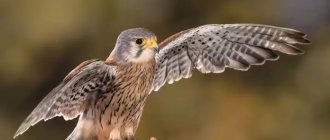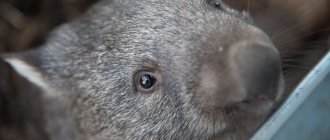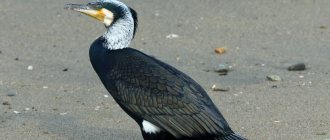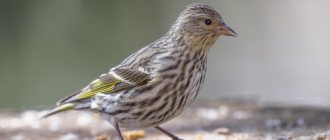The heron belongs to the group of ankles, the order of storks. There are more than 60 species of these birds.
Despite the name of the order, the closest relationship unites herons with night herons and bitterns, and only then come storks.
But the crane and the heron, despite popular belief, have nothing in common, like the heron and the flamingo.
general characteristics
Herons are considered quite large birds, the size of which can be about 100 cm. On average, an adult can weigh up to 2 kg, with the male being somewhat heavier than the female. There are no other sexual differences between herons.
The body of the bird is dense and massive. They have a long neck, which occupies an unusual position in flight.
Unlike other storks, which stretch their neck forward during flight, the heron positions it so that the back of its head touches its back.
Herons have long legs on which there are four toes: three pointing forward, one pointing back. The wings have a rounded end, their span can reach 2 meters, which allows the birds to feel good even on long flights.
Birds have one particularly long claw, used for maintaining hygiene. Powder appears on the broken tips of feathers, which is needed to lubricate the feathers. This prevents them from sticking together due to the mucus secreted by the fish they eat. For this purpose, the longest claw is used, which helps in “dusting” the plumage.
The color of the birds is usually monochromatic; the characteristic colors are gray, white, black, and sometimes red. The color of the beak is yellow or dark brown, less often black. The plumage is quite smooth, and some varieties have a crest on the head.
Elena
Ask a Question
Question to the expert
What sounds do herons make?
The repertoire of these birds is quite wide, although for the most part herons can be called silent individuals. Most often you can hear a sound from them that is similar to a scream with a grinding sound and is reminiscent of the croaking of other birds. This sound is pronounced on the fly and can be easily heard from anywhere, even at a distance. Other sounds are quite difficult for ordinary people to hear, since herons make them during nesting. The sound range is wide and can manifest itself in the form of an alarm signal - a short cackle, an aggressive warning - a prolonged vibration reminiscent of a guttural scream. A male entering a new place makes himself known with a short, dull croak. When the birds forming a colony begin to communicate with each other, their “conversation” resembles a mixture of cawing and croaking. When landing, birds may make a sharp sound resembling a grinding sound.
Description of the bird
The gray heron has a very long neck, long and thin legs and a long beak. The weight of this large bird averages about 1.5 kg, reaching 2 kg. Body length is up to 102 cm. Wingspan is from 1.5 to 1.75 m. Beak length is from 10 to 13 cm. The beak is conical, yellowish-brown in color. The iris is yellow, the eye ring is green. Paws are olive-brown in color.
— Advertising —
The body is bluish-gray on top, the chest, belly and undertail are grayish-white. The head is white, above the eyes there are grayish-black stripes, which connect at the back of the head and turn into a black crest. The neck is grayish-white with black spots. The primary flight feathers of the wings are black. The secondary ones are bluish-gray. The feathers in the throat and chest area are elongated and become even longer during the mating season. There are wide black stripes on the sides of the body. The tail is gray.
Where do herons live in the wild?
Herons are fairly common birds that can be found in different habitats. They prefer to live near bodies of water, in particular, near swamps. The choice of location depends on the time of year. In summer, birds prefer swamps with fresh water; in winter, they choose places with salt water.
Heron in the swamp
Herons live throughout Eurasia, up to the middle taiga, excluding deserts and mountainous areas. Sometimes birds are located in the southeastern part of Africa, Sri Lanka, and the Maldives.
Herons usually do not fly into high mountain areas that exceed 1000 meters above sea level.
In the central part of Europe, birds are characterized by a predominantly sedentary lifestyle, but sometimes they can migrate to the south. Herons living in Russia fly to Africa in winter. Species living in Central Asia choose China and India for this.
Habitat
The great blue heron is widespread in North and Central America, as well as in the West Indies and the Galapagos Islands. In Russia, single specimens were observed on Ratmanov Island in the Bering Strait, although there is no reliable data on this matter. In the north of their range, herons are migratory and migrate to the south of North America or the northern territories of South America for the winter. This heron lives in a wide variety of biotopes, with the exception of desert and high-mountain areas.
What does a heron eat in the wild?
Herons are birds of prey, so they feed on food of animal origin. Predators are quite active and voracious. Since birds prefer to settle near bodies of water, the main part of their diet consists of:
- Fish.
- Insects.
- Shellfish.
- Crustaceans.
- Lizards.
- Serpent.
- Aquatic vertebrates.
Herons can steal food from other birds, such as gulls or cormorants.
In an effort to get food, the heron freezes in one place or slowly walks back and forth. When the prey becomes noticeable, the bird makes a sharp, powerful lunge, straightening its neck and grabbing the prey. She swallows her prey whole, without cutting it up.
Sometimes, from the nesting site to the place of food production, herons have to make flights, the duration of which can reach 30 km. These birds live mainly on the shoreline of water bodies, so such flights are not always necessary.
Herons know how to catch prey in a rather cunning way. They enter the water and wait for a fish to come along. At this time, the bird moves its fingers, and the fish mistakes these movements for crawling worms and swims closer. When the prey is close enough, the heron grabs it and swallows it headlong.
Nutrition
Herons mainly feed on frogs, tadpoles, fish, mollusks, crustaceans, and insects. But on occasion they can eat small rodents or snakes.
Birds hunt for their prey from ambush. They can stand on one leg for a long time, tracking down prey in reed thickets, or wander along the shore, stirring up the water.
As soon as the future prey is close to the heron, it straightens its neck in one lightning-fast movement, capturing it with its beak.
Lifestyle and behavioral characteristics
Typically, herons prefer to settle in secluded places, away from humans and other birds. But this does not always work out, since the main criterion for location is the presence of a good food supply. Because of this, nests may be built in fish ponds near villages and towns.
Birds can be active at different times of the day, but the preferred period for hunting is daytime. Hunting time is determined by the nature of the prey obtained and the region of habitat.
Herons can lead both sedentary and migratory lifestyles. Those species that live in northern latitudes are prone to migration, since with the arrival of winter they are deprived of the opportunity to obtain food for survival.
During migration, herons gain greater height and can move both at night and during the day. In autumn, evening and night are preferable for them, and early morning becomes a time for rest after a long flight.
In addition to seasonal migration, a high level of flock dispersal can be observed in herons, which ends the nesting period. This behavior is especially typical for young individuals leaving their parental “home” for adulthood.
Question to the expert
How long is the lifespan of a heron?
Herons are considered the longest-lived birds. Even in the wild, these birds can live up to 15 years. Moreover, in captivity this period increases to 25 years.
Social structure
All species of herons have different social structures. Some prefer to gather in small groups, others lead a solitary lifestyle. Usually bird colonies do not exceed 20 nests, in rare cases there are more. Herons do not like to gather in flocks, preferring to live at a distance from each other.
Unlike other birds that migrate in flocks, herons, even during the migration process, unite in small groups consisting of several individuals.
The largest colonies of herons, located in Europe, consist of thousands of nests. However, such examples are quite rare.
Flock of magpie herons
Heron's home
Heron nests are located on large bushes or tall trees. The constructed dwelling looks like a cone, the top of which looks down. Its dimensions are 60 cm in height, 80 cm in diameter. Nests are made of thin twigs, branches, leaves, and fluff. They are located at a height to protect the offspring from prying eyes. Usually the nest is built at a height of at least 20 m from the ground.
Herons are very attached to their nest, so they can use the same housing for several years.
Nests are located near water bodies, forest plantations, and in places where there are open areas. The preferred areas for settlements are lakes, rivers, and ponds. Herons settle in colonies or individual pairs.
Links[edit]
- BirdLife International (2012). "Agamia agami". IUCN Red List of Threatened Species
.
2012
. Retrieved November 26, 2013.CS1 maint: ref=harv (link) URL of old form - “Garza da mata (Agamia agami) | WikiAves - Encyclopedia das Aves do Brazil". www.wikiaves.com.br
. Retrieved January 17, 2022. - ^ ab "Agamia agami (Agami Heron)". IUCN Red List of Threatened Species
. Retrieved October 10, 2016. URL of old form - Rayno, Pennsylvania; Kushlan, J. A. (2004). "Nesting of the Agami Heron". Waterfowl
.
27
: 308–311. doi:10.1675/1524-4695(2004)027[0308:notah]2.0.co; 2 - via BioOne. - ^ ab "Agami Heron Working Group".
- ^ abc Kushlan, J. A. (2016). "Behavior of the heron agami (Agamia agami)". Waterfowl
.
39
: 187–192. doi:10.1675/063.039.0209 - via BioOne.
- Agami agami (Agamia agami) Conservation Plan. Steer, A., Kushlan, J., 2015 (compilers). Responsible Editor: Benoit Herpeau, President of the GEPOG Association, 15 Avenue Pasteur, 97300 Cayenne, French Guiana.
- Birds of Venezuela
by Hilty, ISBN 0-7136-6418-5 - Birds of Northern South America.
Identification
Guide Clemencia
Rodner and Miguel Lentino. Yale University Press: Volume 1. Ancestral Accounts. ISBN 978-0-300-10862-0 - Volume 2. Tablets and maps. ISBN 978-0-300-12415-6
Character and habits of herons
Herons are wading birds, which gives them the appropriate habits. Their movements are usually slow, thoughtful, majestic. Birds move slowly, stretching their long necks forward. Thus, they go on a hunt, which can be carried out either alone or in a small group. When late evening comes, the herons go to the shelter where they wait for the next day. Their peak activity occurs during the daytime.
During a hunt, herons are able to focus on the process and completely disconnect from the outside world. They can stand in the water for a long time, completely motionless, looking out for prey. At this time, they keep their heads down to better see what is happening in the water.
Outside of hunting, these birds behave quite aggressively both towards other species and towards each other. They can fight for food, take food from each other and start fights. Also, herons jealously guard their nest and do not allow others to approach it. Because of this feature, they most often settle at a sufficient distance from each other.
Interaction with people
Recommended by topic
Blackbirds Woodpecker Penguins
Some time ago, birds were considered harmful and dangerous to people, so their population was actively exterminated. So, back in the 19th century, colonies were ruined, adult individuals were killed so that they would not encroach on the fish. It was believed that the interference of herons caused significant harm to fisheries, but later this hypothesis was not confirmed. During this time, many species of herons were destroyed, which was the reason for their migration and the choice of new places for building nests.
In the Middle Ages, people generally hunted herons for sport. For this purpose, fast and agile falcons were used, which were trained specifically to capture herons. The main trophy was not considered to be bird meat, but feathers from the head. Such entertainment was often used in the circles of nobles and was considered a worthy activity for the nobility.
Currently, people pose a danger to herons and other species of birds by constantly polluting environmental objects, in particular, water bodies where herons get food. The use of pesticides, landfills, poisoned water - all this causes forced migrations of herons and the disappearance of many populations. In addition, their numbers are affected by the cutting down of trees in coastal areas where birds often nest.
Herons in the reserve
All this leads to the fact that herons prefer to build nests away from people and not have any contact with humans. However, the lack of food in the natural environment sometimes forces them to settle next to human buildings.
Reproduction and raising of offspring
Already at one year old, herons are considered sufficiently mature and mature individuals for sexual reproduction. However, this rule only applies to females. In males, the formation period can last up to two years.
Herons can be conditionally classified as monogamous birds. They form strong pairs, take care of each other and their offspring, but do this for one season.
If the birds are migratory, immediately after returning home, they begin building a nest. Usually this moment occurs at the beginning of April, if we are talking about a temperate climate. The male initiates construction first.
After the first work on creating a home is completed, he begins to look for a partner with whom he will continue the work he has begun. To do this, the male stands up, opens his wings wide and emits loud cries. A female flies to the cry, which he scares away, driving away from the nest. At this time, the birds look closely at each other, and a similar ritual continues for several days to two weeks. The male prefers stubborn and patient females who are ready to seek permission to create a pair for a long time.
It is noteworthy that, unlike other birds, among herons, males choose a partner. The later the female arrives, the faster the male forms a pair with her. This is due to the biological need to reproduce offspring in a timely manner.
The male shows his readiness to mate when he begins to pinch off the rods that form the base of the nest. If the partner responds with a similar gesture, a couple is formed and conception occurs. During this period, the herons complete the construction of the nest through joint efforts. Males continue to extract building material, while females arrange it into a home.
Typically, a female produces from 2 to 9 bluish-green eggs per clutch. They will have to hatch for 28 days. This period may be shortened if the laying took place in the southern regions. There the incubation period takes about 21 days.
Moreover, despite the fairly large number of eggs, only half of the offspring survive, about 3-4 chicks. This is due to the fact that the chicks are born tiny and defenseless, and the parents do not always have time to take care of them.
Caring for the Cubs
The chick that is born first has a much better chance of survival than its brothers. This is due to the fact that he gets more food and attention from his parents, which at this stage is critical for the development of the chick. Newborns appear helpless, naked, but their eyes open immediately. The first down covers their body approximately seven days after birth.
Parents feed their offspring with half-digested food taken from the stomach, since the babies themselves are not yet able to swallow solid food.
As soon as all the chicks are born, a fierce competition ensues between them. The first chick is the strongest; it takes food from the rest. In addition, other birds, for example, crows, can take food from the chicks if the adults for some reason do not guard the nest.
Sometimes large chicks can eat smaller brothers and sisters.
By two months, the chicks finally become stronger and gain the ability to fly and get food on their own. After this, they fly away from the parental nest, beginning an independent life.
Natural enemies of herons
Herons are quite large and strong predators. What gives them an advantage is their strong beak, which can protect them from many enemies. Under natural conditions, herons are afraid of:
- Lisits.
- Birds of prey.
- Shakalov.
- Water rats.
Enemies can not only attack herons, but also break into their nests and eat eggs and newborn offspring. Birds themselves are often carriers of diseases, particularly parasites. This is due to their diet, which consists of fish and various crustaceans, which contain many parasites.
Climatic conditions also influence the decline in bird populations. Widespread climate change, a long cold spring with falling snow deprives birds of food, which is why a significant part of them die, since herons are not adapted to survive in such conditions.
External links [edit]
Media related to Agami heron (Agamia agami) at Wikimedia Commons?
- Video of Agami Herons in the Internet Bird Collection
- Stamps (Suriname) with RangeMap
- Photo gallery Agami heron VIREO
- Article and photo from "Agami Heron" - Medium resolution - "Birds-Belize"
| Taxon identifiers |
|
